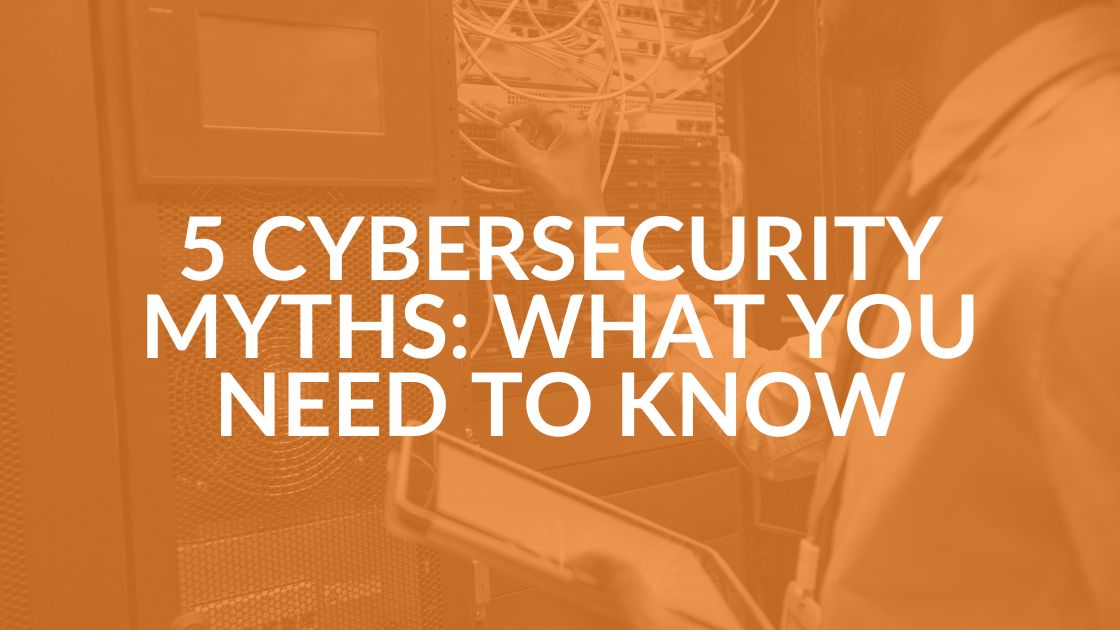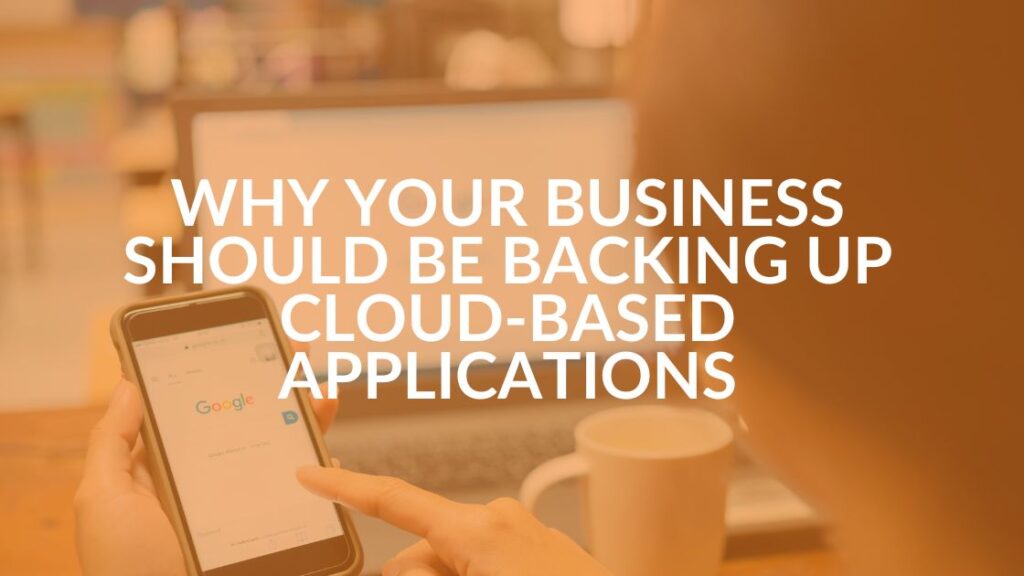5 Cybersecurity Myths

Subpar security is one of the biggest threats to businesses in today’s world. Understanding the importance of cybersecurity and debunking common cybersecurity myths is crucial in safeguarding your business from potential threats.
Let’s take a closer look at some of the misconceptions and how to address them effectively.
Myth #1: Cybersecurity isn’t my responsibility.
Reality: Cybersecurity is everyone’s responsibility. Your employees are the first line of defense against cyber threats, and they represent a significant attack surface.
Hackers often target individuals through phishing campaigns, exploiting any gaps in security knowledge.
It’s essential to recognize that your employees may not be cybersecurity experts, and that’s okay. Providing them with proper education and training is the key.
By helping them understand the significance of cybersecurity and their role in protecting the business, you empower them to make informed decisions. Through training, they’ll dispel common cybersecurity myths, gain the skills to identify threats and adopt secure practices in their daily activities.
Myth #2: Hackers only target large organizations.
Reality: Small businesses are not immune to cyberattacks. In fact, they are increasingly targeted due to potential weaknesses in security procedures.
Small businesses typically lack formal security policies and updates, which makes them vulnerable. To address this, small businesses can seek guidance from an IT support services provider that can tailor cost-effective security solutions to their unique needs.
Myth #3: Strong passwords are enough to keep me safe.
Reality: While using complex passwords is a step in the right direction, the length of the password is a more critical factor in its security.
Crafting strong passwords can be confusing, especially with the numerous requirements from different platforms. Encourage employees to create memorable phrases instead of trying to remember complex combinations.
Want more expert tips on password creation? Check out our free password management guide.
Additionally, implementing two-factor authentication or multifactor authentication (MFA) adds an extra layer of protection, ensuring that even if a password is compromised, unauthorized access is thwarted.
Myth #4: Basic antivirus software is sufficient for protection.
Reality: One of the more prevalent cybersecurity myths revolves around having a simple antivirus software installed on your computer. Unfortunately, relying solely on traditional antivirus software is no longer enough. Cyber threats have evolved, and specialized tools are necessary to combat specific dangers like ransomware.
It’s challenging to keep up with the ever-changing cybersecurity landscape, but adopting a synchronized approach is a wise move. Ensure your security toolkit covers various aspects, including endpoints, firewalls, networks and emails.
Moreover, backup and disaster recovery tools are essential to mitigate potential incidents.
Myth #5: We only need to protect against hackers.
Reality: While external threats are significant, insider threats and accidents within the organization can also lead to breaches.
Recognize that even well-meaning employees can make mistakes, leading to accidental data breaches. Implementing policies such as encrypting removable devices and controlling access to sensitive information can significantly reduce the risk of accidental incidents.
Regular training and communication are also essential to foster a culture of security awareness within your organization.
Fighting Cybersecurity Myths the Right Way
Remember, we all start somewhere, and cybersecurity can be overwhelming. If you need any assistance or guidance in enhancing your cybersecurity, don’t hesitate to contact us or book a meeting.
We’re here to support you in navigating the complexities of cybersecurity and keeping your business safe from potential threats.
Share this Blog

Is Your Name or Birthday a Part of Your Password?
If so, you’re a part of the 59 percent of people who don’t follow proper password hygiene. More than 70 percent of passwords are used for more than one system, meaning if cybercriminals crack one, they can access a lot more accounts.
Our free Enterprise Password Management Guide will give you the best password hygiene practices to help you secure your computer and your business.
Download the Guide
Explore the Latest Trends in IT

Microsoft 365 and Google Workspace: The Importance of Backing Up Your Cloud-Based Applications

AI Guiding Principles

Edge vs Chrome Security: Which Is the Best Browser for Your Business?




